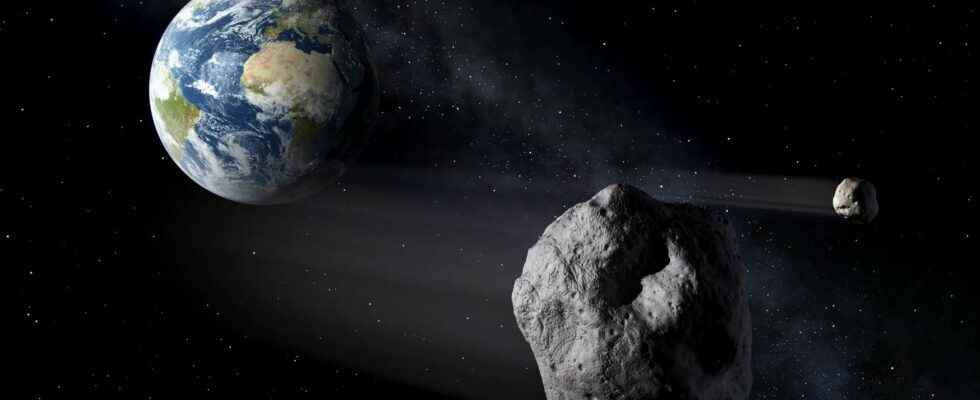You will also be interested
[EN VIDÉO] Dart, a suicide mission to deflect an asteroid For planetary defense, the Dart probe will travel to a double asteroid and collide with it in order to measure its impact on its orbit. In video: launch, deployment and progress of the mission.© NASA, Johns Hopkins APL, Steve Gribben, Jessica Tozer
The year 2023 will not sound the death knell for humanity because of the fall of asteroids. A team of researchers from Near-Earth Object Coordination Center (NEOCC, Near-Earth Object Coordination Center, in French) announced that asteroid 2022 AE1 will not hit Earth in 2023. The asteroid, discovered in early 2022, could potentially crash into the planet in July 2023, but doubts about a possible collision have been dismissed by the NEOCC, affiliated with the European Space Agency (ESA).
Powerful enough to destroy a city
Discovered on January 6, 2022, 2022 AE1 measures 70 meters in diameter, the height of a building over 20 stories high. Quickly, the so-called near-Earth asteroid was ranked at 1 out of 10 on the Turin scale, a benchmark determining the level of danger of meteorites can crash to Earth. Level 1 represents one of the lowest levels of risk, but the NOECC researchers did not rule out such an event occurring, pointing in particular to the proximity of the object, then spotted 1.3 million kilometers from our planet. I’astronomer Marco Michelo, officiating at ESA, then explained to Space.com that 2022 AE1 was the “riskiest” object he had observed in the last ten years.
An asteroid of this size, moving at a speed average speed of 20 kilometers per second, could cause a catastrophe equivalent to the impact of the Tunguska. In 1908, the fall of a meteorite in Siberia caused the destruction of a forest over tens of kilometres, releasing a energy similar to 1,000 times the explosion of the nuclear bomb little boy dropped on Hiroshima. Under a potential impact of 2022 AE1, the latter could easily obliterate a city the size of Paris. The Asteroid Collision simulation site thus makes it possible to visualize the extent of the damage that the meteor could have provoked, completely razing the center of the capital, the blast even reaching the distant suburbs.
Fortunately, scientists have noticed a change in the trajectory of 2022 AE1, causing the calculations to be adjusted. If the object remains in an environment relatively close to Earth, it will not graze the Blue Planet in July 2023 but will pass about 10 million kilometers from us, eliminating any risk of collision.
NEOs under constant surveillance
No scenario Don’t Look Up for 2023, although astronomers at the NEOCC said that if the asteroid was heading towards Earth, space agencies would have run out of time to deflect it. Asteroids and in particular near-Earth objects are constantly monitored by the various space agencies. NASA announced in December the modernization of an algorithm for tracking near-Earth asteroids, Sentry II. Thanks to this technology, the American space agency keeps a eye vigilant about the 28,000 asteroids orbiting the Earth.
At the same time, other missions are being developed to deal with a possible disaster scenario: in November 2021, NASA launched the dart missioncarrying a probe responsible for deflecting an asteroid, Dimorphos, in September 2022. Dart will thus make it possible to analyze what are the deflection capacities offered by such operations.
Interested in what you just read?
